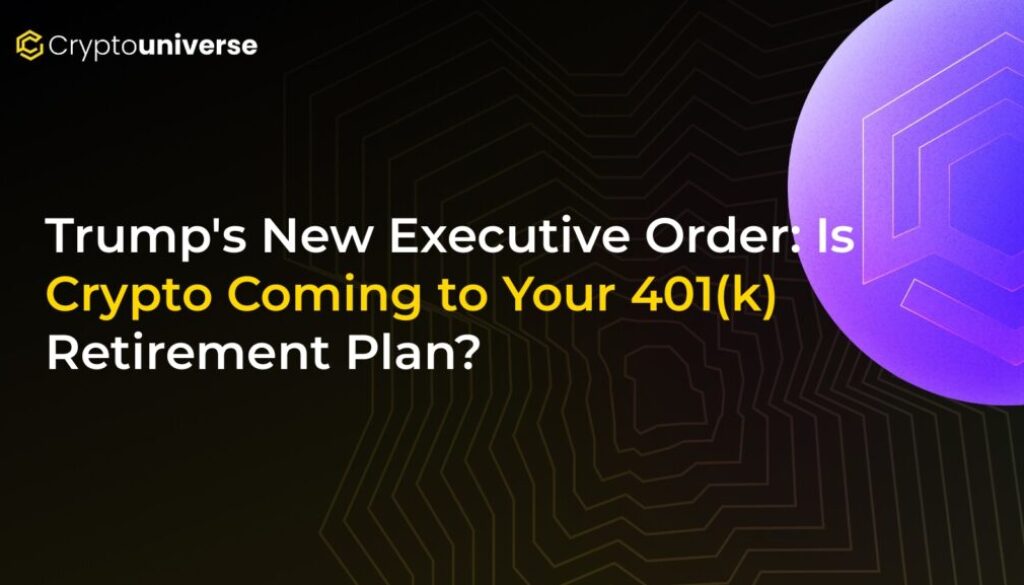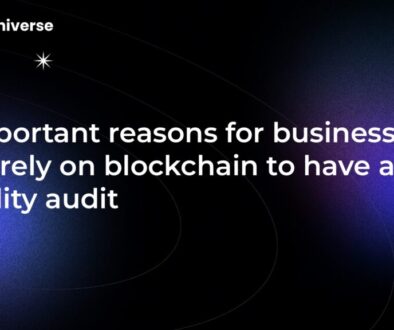Trump’s New Executive Order: Is Crypto Coming to Your 401(k) Retirement Plan?

A Landmark Move for Crypto in Retirement Savings
In a decision sending ripples through both Washington and Wall Street, President Donald Trump has signed a new executive order aimed at making it easier to include cryptocurrency in American 401(k) retirement plans. The move signals a significant pro-crypto shift in policy but has been met with stark warnings from financial experts who fear it could expose retirement savers to unprecedented risk.
This executive order doesn’t immediately add Bitcoin to your 401(k) options, but it directs key federal agencies to clear the path for it. Let’s break down what this means for the future of crypto and your retirement savings.
What Exactly Does the Executive Order Do?
Announced on Thursday, the order instructs two of the most powerful financial regulators in the country to re-evaluate their rules concerning retirement funds.
- The Department of Labor (DOL): The DOL has been tasked with reexamining its guidance on how 401(k) plans can invest in “alternative assets.” This category includes not just cryptocurrency but also private equity and real estate.
- The Securities and Exchange Commission (SEC): The SEC is directed to revise its own regulations and guidance to better facilitate these kinds of alternative investments within retirement accounts.
In essence, the White House is pushing the regulatory bodies to lower the barriers that have traditionally kept volatile assets like crypto out of mainstream retirement portfolios. The news caused an immediate surge in cryptocurrency prices, as investors anticipate a potential flood of new capital into the market from the trillions of dollars held in U.S. retirement accounts.
From “Extreme Care” to an Open Door
This new directive marks a dramatic reversal of the previous administration’s stance. In 2022, the DOL issued guidance urging plan fiduciaries to “exercise extreme care” before adding a crypto option to a 401(k) menu. The department cited “serious concerns” about the asset class, highlighting its speculative nature, extreme volatility, and challenges with valuation and recordkeeping.
However, the Trump administration rescinded that cautious guidance this past May, labeling it as government “overreach.” This was followed by the Department of Labor adopting a more “neutral” stance. Thursday’s executive order goes a step further, actively encouraging a more supportive regulatory framework as part of Trump’s pledge to make the U.S. the “crypto capital of the world.”
The Bull Case: A Gateway to Growth and Diversification?
Proponents of the move, including the White House, argue that alternative assets are essential for a modern investment portfolio. The claim is that assets like cryptocurrency can offer:
- Competitive Returns: The massive gains seen in past crypto bull runs continue to attract investors looking for high-growth opportunities.
- Diversification Benefits: Adding assets that don’t always move in the same direction as the stock market can, in theory, help balance a portfolio.
For the crypto industry, this is a potential watershed moment. Access to the massive 401(k) market would represent the ultimate form of mainstream adoption, legitimizing digital assets on an unprecedented scale.
The Bear Case: A “Terrible Idea” for Retirement
Despite the potential upsides, many financial experts are sounding the alarm. They argue that the core purpose of a 401(k) — steady, long-term growth for retirement — is fundamentally incompatible with the wild nature of cryptocurrency.
Alicia H. Munnell, a senior advisor at Boston College’s Center for Retirement Research, called the idea of crypto in 401(k)s a “terrible idea,” likening it to gambling. In a sharp critique, she noted several key issues:
- Lack of Understanding: Most 401(k) participants do not understand the complex technology and market forces behind crypto.
- Extreme Volatility: The value of cryptocurrencies can plummet just as quickly as it can soar, a risk many savers cannot afford.
- Not a Prudent Option: The history of crypto is filled with stories of hacks, scams, and catastrophic collapses, making it a questionable choice for fiduciaries tasked with protecting workers’ savings.
“DOL should not be opening the door to this type of activity,” Munnell wrote, arguing that straying from traditional investments is unlikely to improve long-term returns for the average person.
What Happens Next?
President Trump’s executive order is the starting gun, not the finish line. The DOL and SEC must now undergo the process of reviewing and potentially rewriting complex financial regulations. This will take time and will likely involve public comment periods and intense debate.
While this development is a major victory for the crypto industry, it also introduces a high-stakes debate about the future of retirement in America. Whether this move will unlock new wealth for millions or expose them to devastating losses remains the multi-trillion-dollar question.


